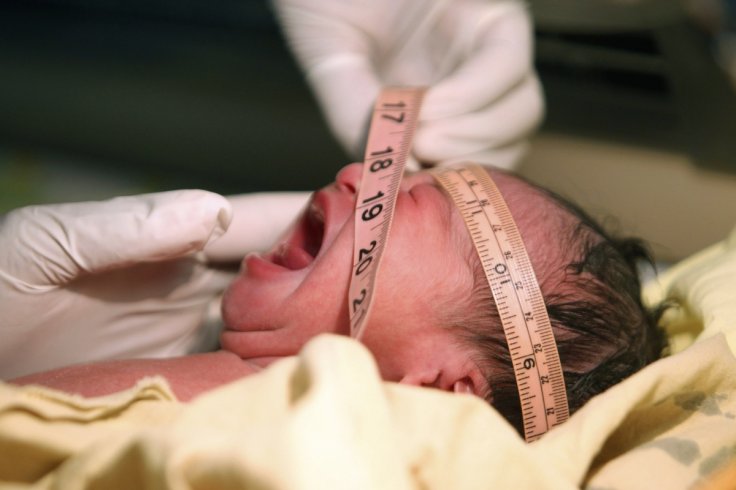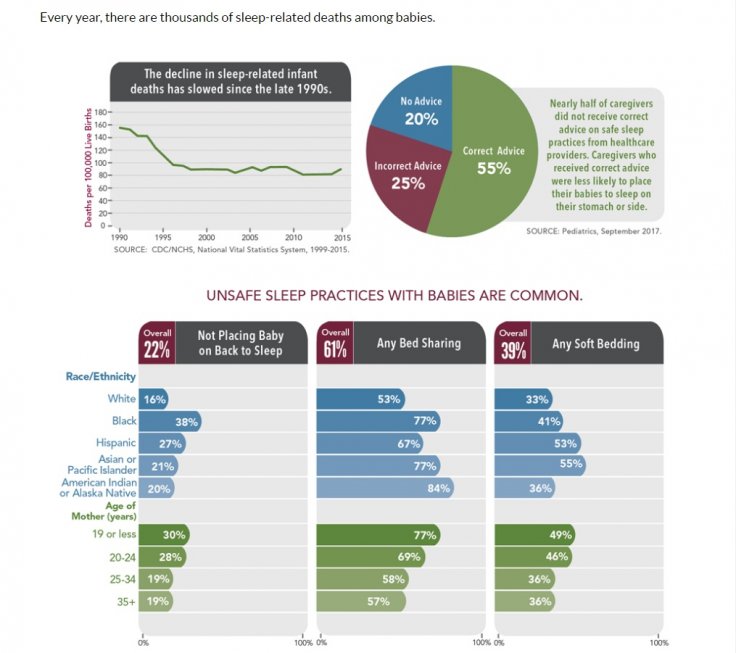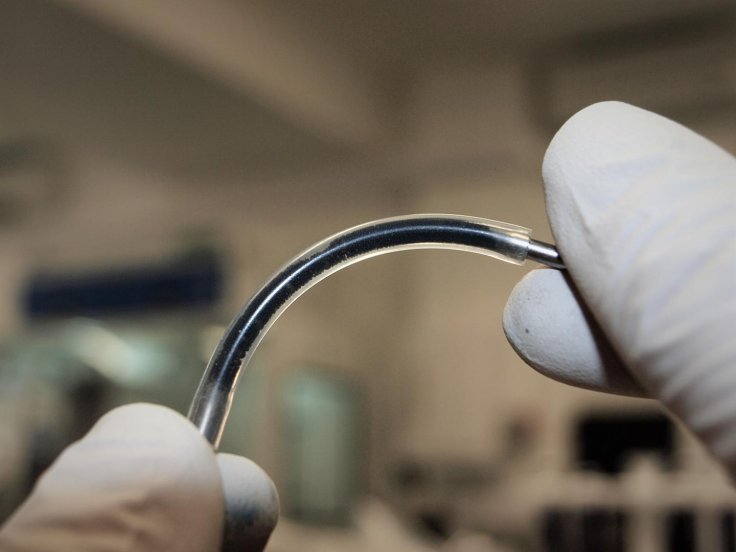
The way mothers put their child to bed might trigger the risk of sudden infant death syndrome (SIDS), said researchers who have designed a breakthrough technology to monitor heart and breathing abnormalities in babies.
A report from US Centers for Disease Control and Prevention (CDC) has claimed that parents have some habits which are harmful to their children as found out in a survey that indicated three major flaws.
Firstly, one out of five mothers places their babies during sleep on their side or stomach. Secondly, some of them leave soft objects like loose beddings and thick blankets in their child's sleeping area. Lastly, three out of five mothers keep their infants with them when they are sleeping.

Most of the caregivers and new mothers do not know that some of their actions may lead to about 3,500 sleep-related deaths of babies in the US annually. The figure is far higher globally.
To avoid this, CDC has provided a proper health care list for babies to prevent SIDS:
- Advise caregivers to place babies on their back for every sleep. Keep soft bedding such as blankets, pillows, bumper pads, and soft toys out of their baby's sleep area, and share the room but not the bed with babies.
- Ask caregivers about how they place the baby to sleep, challenges to following recommendations, and help them find solutions.
- Model safe sleep practices in hospitals.
- Follow the latest recommendations from the American Academy of Pediatrics for safe sleep.

In a bid to tackle this problem, physicists from the University of Sussex have also designed a new technology which will be monitoring sick babies to detect heart and breathing rate abnormalities.
This technology will help parents who are concerned about SIDS to track their newborn baby's health condition with an automatic update through their smartphones. This hi-tech unobtrusive sensor with 'fitness tracker'-style technology is built into the baby's sleepsuit.
Prof. Alan Dalton, from the School of Mathematics and Physical Sciences, along with a group of physicists at the University of Sussex used a cheaper element graphene, water and oil, which conduct electricity. Since the cost of graphene is less, the technology will be feasible for a large number of customers, he said.
The results of the experiment were published in the journal Nanoscale. Now the team is in talks with commercial sponsors to receive more funds to continue the research.
Prof. Dalton has confirmed that this unique device will be comfortable, "non-invasive and can provide intuitive diagnostics of breathing and heart rate." He added that they will "have a suit that the baby can wear which will read-out all vital information wirelessly" within two to four years.









